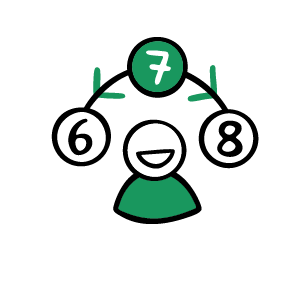Sixth Grade Curriculum
- 7 courses included
- 14-day money back guarantee
- Update grade level anytime
Subscribe more students, save more!
10% off
2 students
20% off
3-5 students
25% off
6+ students
Your sixth grader is developing the ability to think more abstractly, solve complex problems, and understand multiple perspectives. In language arts, sixth graders focus on literary analysis of both fiction and non-fiction works. Our math units challenge students to work with more complex numbers and operations, deepening their understanding of mathematical relationships. Learners can choose a science and social studies course from several options. In addition, sixth graders have the option to choose elective options to customize their schedule.
Most popular science and social studies classes for sixth graders:
- Life Science- Explore cells and heredity, the five kingdoms, human body systems, and ecology.
- Ancient World History- Learn about ancient peoples, cultures, civilizations, and innovations through approximately 300 CE.
Sixth graders choose from the following elective options:
- Computer Science
- Computer Application- Office 2019
- Online Learning & Digital Citizenship
- Strategies for Academic Success
- Art History
- Intro to Art
- Intro to Communications & Speech
- Environmental Science
Science Alternatives:
- Earth Science
- Physical Science
History Alternatives:
- World Cultures & Geography Civics
- Government & Economics
- US History
This outline shows an example of both what your child will learn (the scope) and the order in which the lessons build on each other (the sequence). More detailed lesson plans are available in the parent account. All lessons are entirely customizable.
Sixth Grade Math
Chapter 1: Whole Numbers
- Roman Numerals
- Generate Equivalent Forms of Whole Numbers
- Comparing and Ordering Whole Numbers
Chapter 2: Operations with Whole Numbers
- Rounding and Estimating
- Adding, Subtracting, Multiplying, and Dividing
Chapter 3: Exponents and Order of Operations
- Powers of 10
- Evaluating Exponential Expressions
- Order of Operations (GEMDAS)
Chapter 4: Algebraic Expressions
- Solving Expressions with Variables
Chapter 5: Equations
- One-Step Equations with Whole Numbers
Chapter 6: Number Patterns
- Arithmetic and Geometric Sequences
Chapter 7: Decimals
- Compare, Order, and Round
- Operations with Decimals
Chapter 8: Fractions
- Multiplying and Dividing
Chapter 9: Ratios, Rates, and Proportions
- Equivalent Ratios
Chapter 10: Percents
- Percent Equivalents and Discounts
Chapter 11: Integers and Rational Numbers
- Plotting on Number Lines
Chapter 12: Coordinate Plane
- Graphing Points and Relationships
Chapter 13: Geometry
- Area, Volume, and Surface Area
Chapter 14: Measurement
- Metric and Customary Units
Chapter 15: Statistics and Data
- Mean, Median, Mode
Chapter 16: Probability
- Simple and Compound Events
Sixth Grade Language Arts
Chapter 1: Grammar and Sentence Structure
- Pronouns and Verb Tense
Chapter 2: Vocabulary Skills
- Synonyms, Antonyms, Prefixes, Suffixes
Chapter 3: Spelling and Mechanics
- Common Misspellings and Capitalization
Chapter 4: Writing Process
- Planning, Drafting, Revising, Editing
Chapter 5: Narrative Writing
- Personal Narratives
Chapter 6: Informative and Explanatory Writing
- Structure and Supporting Evidence
Chapter 7: Argument Writing
- Claim, Reason, Evidence
Chapter 8: Literary Analysis
- Character and Theme
Chapter 9: Reading Comprehension
- Main Idea and Supporting Details
Chapter 10: Figurative Language and Poetry
- Metaphor, Simile, Idioms
Chapter 11: Listening and Speaking
- Oral Presentations and Discussions
Life Science
Chapter 1: Nature of Science
- Scientific Inquiry and Measurement
Chapter 2: Living Things
- Characteristics and Classification
Chapter 3: Cells
- Structure and Function
Chapter 4: Genetics
- Heredity and Traits
Chapter 5: Evolution and Natural Selection
- Adaptations and Survival
Chapter 6: Human Body Systems
- Organ Systems and Functions
Chapter 7: Ecosystems
- Food Webs and Energy Flow
Chapter 8: Biodiversity
- Conservation and Interdependence
Chapter 9: Scientific Tools and Technology
- Microscopes and Lab Tools
Chapter 10: Science in Society
- Ethics and Everyday Life
Ancient World History
Chapter 1: Historical Inquiry
- Timeline Skills and Sources
Chapter 2: Early Humans
- Migration and Agriculture
Chapter 3: Mesopotamia
- Sumerians and Empires
Chapter 4: Egypt and Kush
- Nile Valley Civilization
Chapter 5: Ancient India
- Harappan and Maurya
Chapter 6: Ancient China
- Dynasties and Inventions
Chapter 7: Ancient Greece
- City-States and Democracy
Chapter 8: Ancient Rome
- Republic and Empire
Chapter 9: World Religions
- Judaism, Christianity, Islam
Chapter 10: Geography and Culture
- Map Skills and Human-Environment Interaction























